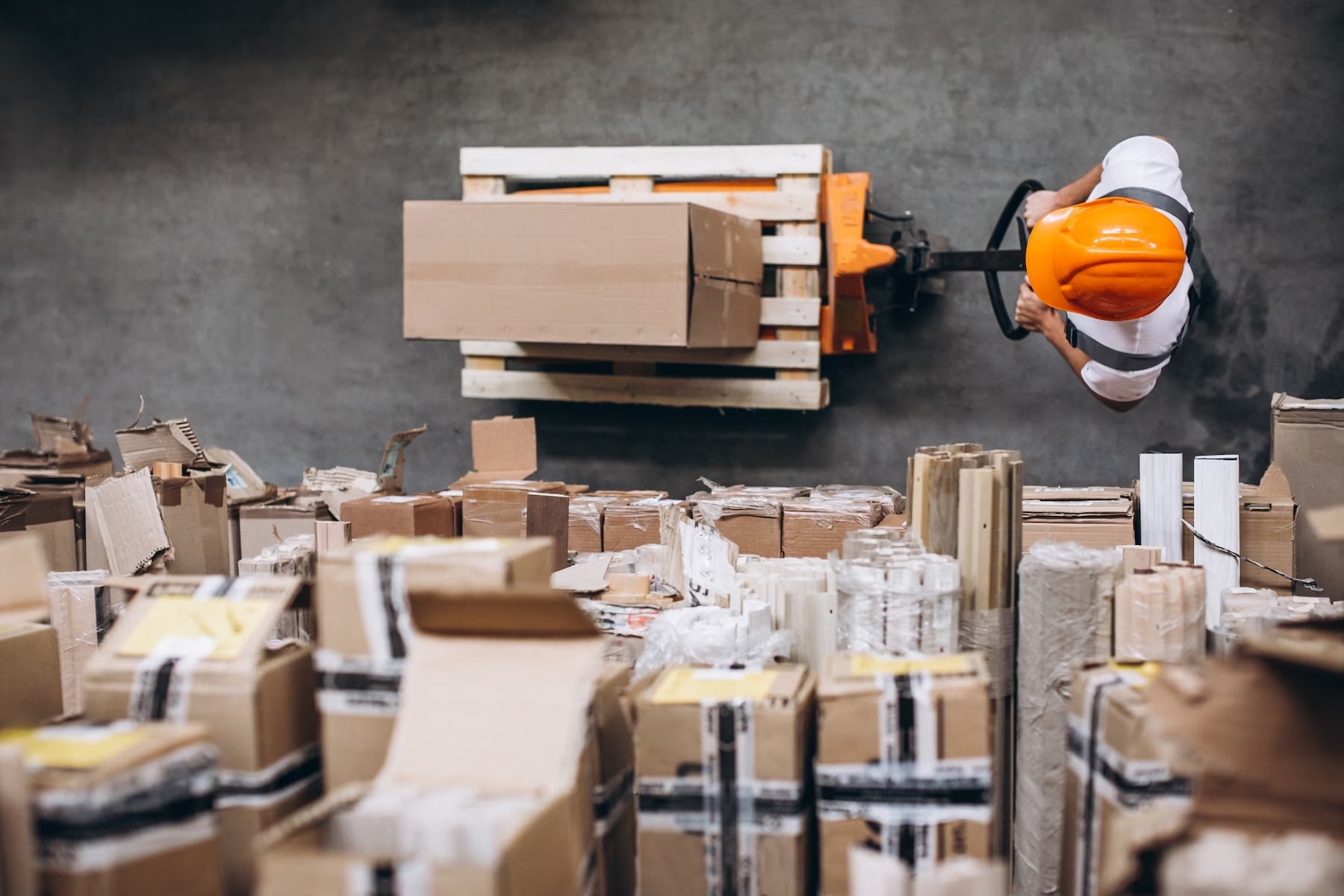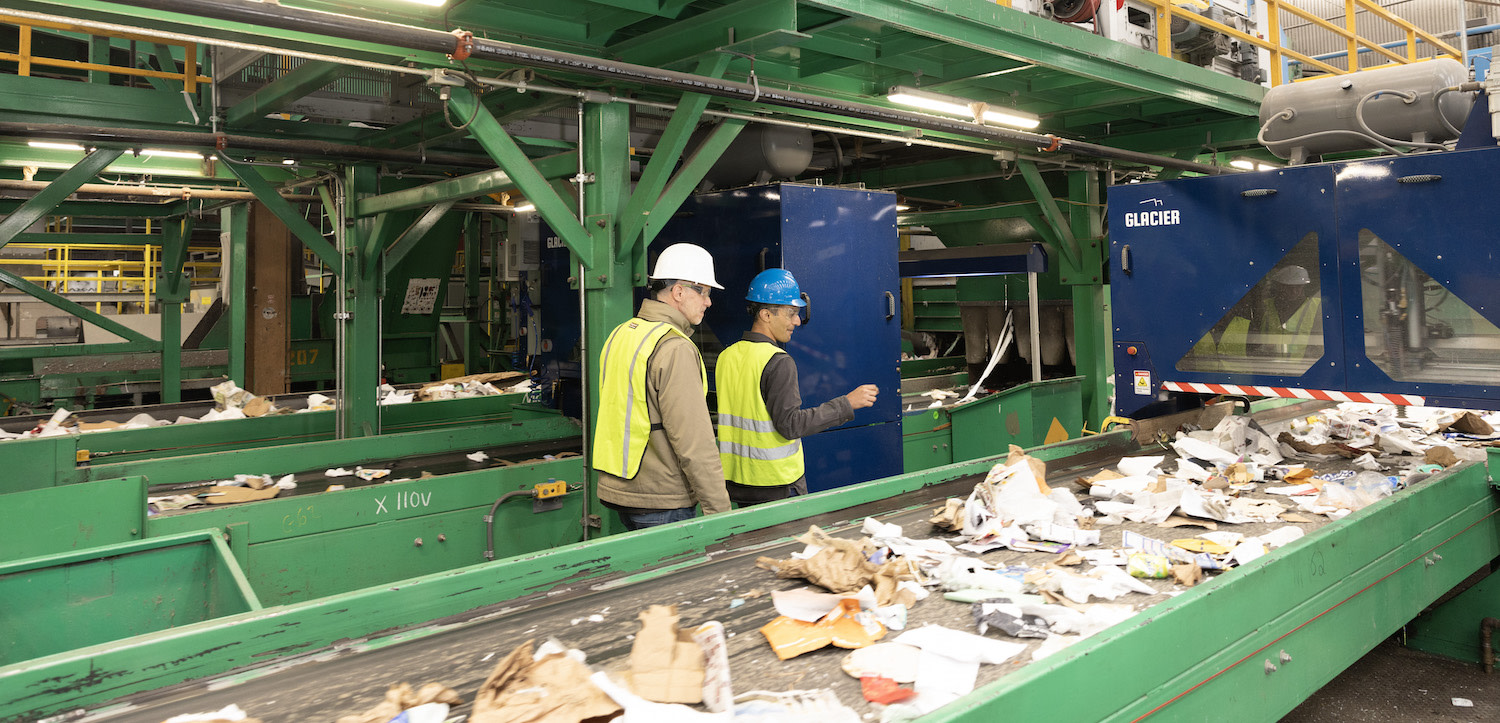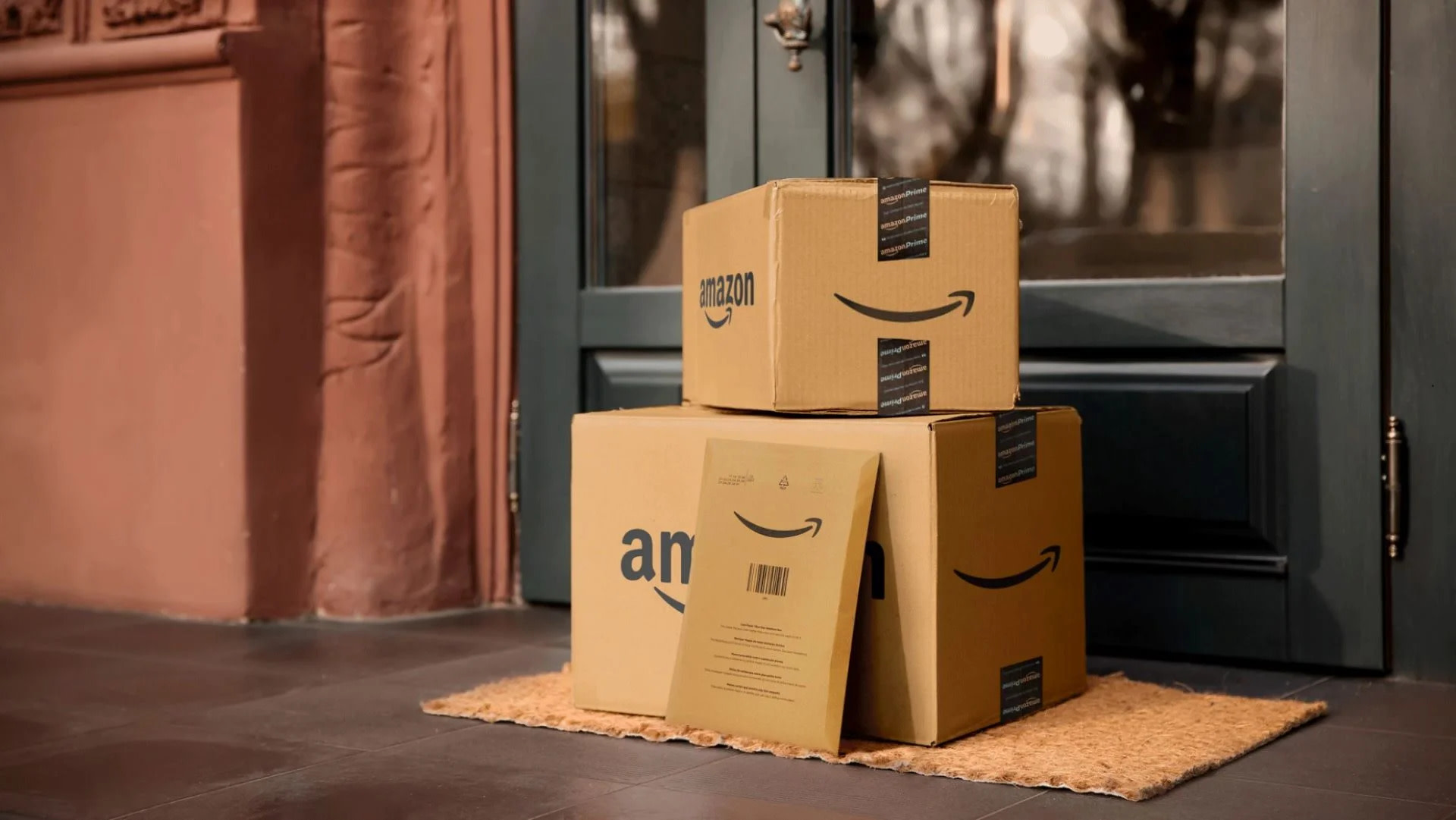Top 10 Sustainable Packaging Strategies in 2023
Amazon.com, Inc.

As consumers become more environmentally aware, businesses are prioritising sustainable packaging. To meet this demand, companies must implement strategies that reduce their ecological impact.
This article offers the top 10 sustainable packaging strategies businesses should follow to provide eco-friendly packaging solutions:
Material Selection
To create sustainable packaging, it is important to select appropriate materials. This choice can have a significant impact on the environment. One option is to use bioplastics, which come from renewable sources like cornstarch or sugarcane. These offer a good substitute for regular plastics made from petroleum. Another option is to use recycled paper or cardboard, which help to conserve resources and minimise waste.
Choosing compostable packaging is becoming more popular as it helps to reduce waste in landfills and is environmentally friendly. By opting for compostable packaging, businesses can support a circular economy and avoid leaving harmful residues behind. It's important for businesses to consider the complete product lifecycle, from sourcing and manufacturing to disposal, when making sustainable material choices.
To achieve sustainability goals, it is crucial to choose materials with lower carbon footprints and minimal environmental impact at every stage of their lifecycle. Many top companies have successfully adopted sustainable material choices, such as Patagonia. This outdoor clothing brand uses recycled polyester made from plastic bottles in their packaging materials. These examples prove that selecting sustainable packing materials is feasible and brings benefits.
Featured Article: Top 5 Social Sustainability Examples You Need To Know
Reduce Packaging
Reducing the size and volume of packaging is a good way to make products more environmentally friendly. Too much packaging uses up resources and makes transportation more expensive and polluting. Companies can use clever design ideas to use less space and produce less waste without risking product safety.
Reducing packaging can be done through lightweighting. This means using lighter and thinner material, while making sure the product is still secure. This method helps to cut down on material usage, as well as reducing shipping costs and energy use during transportation. To reduce packaging even further, businesses can try using alternative packaging formats like flexible pouches or bag-in-box solutions, which require less material than rigid packaging options.
Customising the dimensions of packaging to match those of the product can be an effective way to achieve better efficiency. By doing so, wasted space and materials can be eliminated. A software or automation system can be implemented to analyse the dimensions of the product and calculate the best possible packaging size, thereby making the right-sizing process more streamlined.
Optimising packaging design and eliminating unnecessary components have helped companies like Amazon reduce packaging waste and achieve sustainable operations. Amazon's "Frustration-Free Packaging" initiative is a successful example of this approach, as it reduces packaging waste while still ensuring the protection of products during transit.
How to Redesign Packaging for Sustainability
Sustainable packaging strategies require packaging designs that are both efficient and functional. Packaging should not only look good, but also aim to reduce waste, improve recyclability and provide a better experience for consumers. Prioritising sustainable packaging design can help businesses meet consumer expectations while reducing environmental impact.
Packaging design should prioritise ease of opening and responsible disposal. Excessive seals or difficult-to-open components should be avoided to improve consumer convenience and reduce waste. To encourage recycling, user-friendly designs should include clear instructions or labels for appropriate recycling streams.
Furthermore, promoting sustainability can be achieved by including reusable components or finding secondary uses for packaging materials. One example is to create packaging that can also serve as storage space or repurpose it for other functions. Such a design encourages customers to reuse the packaging instead of throwing it away, leading to less waste and contributing to a circular economy.
Many successful companies have made designing sustainable packaging a priority, resulting in significant benefits. For example, Method, a company that sells household cleaning products, is recognized for its stylish and simplified packaging design that is made from recycled and recyclable materials.
Incorporate Recycled Content
To make packaging sustainable, using recycled materials is a great strategy. Post-consumer recycled materials can be used by businesses to decrease the need for new resources and lessen the negative impact on the environment during extraction and production.
To ensure a consistent supply of recycled materials, it is crucial for businesses to work together with recycling facilities. This can be achieved through forming partnerships with recycling programmes or by investing in their own recycling capabilities. By doing so, businesses can contribute to the development of a circular economy and increase the demand for recycled materials, thereby encouraging more recycling initiatives.
Businesses seeking to include recycled content can find inspiration in success stories from various industries. One good example is Coca-Cola, which uses recycled PET in their beverage bottles and has made impressive progress in this area. Their "World Without Waste" initiative aims to boost the use of recycled materials and achieve fully recyclable packaging by 2025. Incorporating recycled content helps businesses to show their dedication to minimising waste and preserving natural resources.
Biodegradable and Compostable Packaging
Using biodegradable and compostable packaging materials can have great benefits for the environment. These materials are made to naturally break down over time, resulting in a reduced impact on both ecosystems and landfills. Biodegradable materials break down through natural processes while compostable materials become nutrient-rich compost under specific conditions.
To make sure that the packaging meets the required environmental standards, businesses should comply with certified guidelines for compostable materials. Certifications like Biodegradable Products Institute (BPI) or European standard EN 13432 attest that the packaging will decompose effectively in industrial composting facilities. Compostable packaging materials present a practical answer for enterprises who want to cut down on waste and reduce their ecological impact.
Many companies are now using biodegradable and compostable packaging, which has yielded positive results. Food delivery services, for example, use compostable containers made from materials like bagasse (sugarcane fibre) or PLA (polylactic acid) to reduce single-use plastic waste. These successful initiatives show that using biodegradable and compostable packaging is a viable way to meet sustainability goals.
Eco-Friendly Printing and Labelling
To improve the sustainability of their packaging, businesses should not only focus on the materials used, but also on eco-friendly printing and labelling practices. Traditional printing methods use petroleum-based inks and coatings which are harmful to the environment due to the presence of chemicals. Switching to sustainable options such as soy-based inks and water-based coatings can help reduce the environmental impact of the business.
Using based-inks is beneficial because they come from renewable resources rather than non-renewable petroleum. Additionally, they emit less volatile organic compounds (VOCs) which are harmful to the air quality. Water-based coatings offer an environmentally-friendly option instead of solvent-based coatings that emit VOCs into the atmosphere.
To promote sustainable packaging, it is recommended to use fewer labels or use recyclable label materials. Over-labeling leads to more material consumption and makes recycling difficult. Therefore, businesses can improve the recyclability of their packaging and decrease waste by opting for minimal labels or recyclable label materials.
Many companies are leading the way in eco-friendly printing and labelling practices, serving as a model for others. A good example is Procter & Gamble (P&G), which is dedicated to using sustainable packaging and has pledged to use all recyclable or reusable packaging by 2030. Furthermore, P&G has made sustainable printing practises a priority by switching to soy-based inks and water-based coatings.
Right-Sizing Packaging
In order to reduce waste and use materials efficiently, it's important for businesses to customise their packaging to fit their products correctly. Using standard packaging sizes may not be the most effective option. By creating packaging that is the right size for a product, including its shape and dimensions, the amount of excess materials and wasted space can be minimised.
Businesses can use software or automation systems to analyse product dimensions and determine the optimal packaging size. This approach is based on data and helps minimise the amount of material needed, reducing waste. Additionally, right-sizing packaging can lead to lower transportation-related emissions, as smaller and lighter packages take up less space during transport, resulting in fewer trucks on the road and reduced fuel consumption.
Right-sizing packaging can bring numerous advantages, as demonstrated by case studies. One exceptional case is that of Dell, a technology company, which managed to streamline the packaging of their laptops and shrink it by as much as 18%, resulting in the elimination of 20 million pounds of packaging over four years. This eco-friendly measure yielded substantial cost reductions and better sustainability measures.
Featured Article: Top Sustainable Packaging Trends in 2023
Implementing Reusable Packaging
Switching to reusable packaging is a sustainable option that's better than single-use packaging. Single-use packaging is wasteful and depletes resources. Adopting reusable packaging can help businesses reduce waste and conserve resources, which can have a positive impact on the environment.
To reusable packaging work, businesses must work with their customers and suppliers. Options include creating take-back programmes or offering incentives for customers to return the packaging for reuse. Using this approach can help reduce waste and lessen the need for constantly producing single-use packaging. It promotes a circular economy by making full use of packaging materials.
Reusable packaging strategies have been successfully adopted by several industries. Logistics companies, for example, have reduced waste associated with traditional cardboard packaging by using reusable pallets and containers for transporting goods. The food and beverage industry is also using reusable packaging for beverage bottles or bulk food containers to reduce reliance on single-use plastics.
Implementing reusable packaging can help businesses reduce waste generation and contribute to a more sustainable future. There are several successful case studies across various industries that demonstrate the feasibility and benefits of this strategy.
Featured Article: The Irony Of Companies Going To Zero-Waste Products
Supply Chain Optimisation
In order to attain truly sustainable packaging, businesses should work alongside their suppliers to optimise packaging impact throughout the entire supply chain. It's essential to take a holistic approach, ensuring that sustainability factors are integrated at every stage of the packaging journey and not just within their own operations.
To improve their packaging practices, businesses must evaluate their current methods and determine areas where changes can be made. This involves evaluating the impact of packaging materials, transportation methods, and packaging processes on the environment. By collaborating with suppliers, businesses can investigate alternative materials or processes that reduce waste and plastic packaging, improves recyclability, and minimises carbon emissions.
To implement sustainable packaging practices, it's important for businesses to collaborate with their suppliers. By communicating their sustainability goals and encouraging eco-friendly practices, businesses can work together with suppliers. This collaboration might involve setting sustainability criteria for packaging materials, helping suppliers to establish recycling or composting programs, or investing jointly in research and development of sustainable packaging solutions.
Companies can take inspiration from success stories of biggest sustainable packaging companies like Walmart who have successfully optimised packaging sustainability in their supply chains. Walmart has done this by implementing a packaging scorecard system that assesses and encourages suppliers' packaging practices. Thanks to this initiative, there have been remarkable reductions in packaging materials usage and greenhouse gas emissions.
If businesses focus on making their packaging more sustainable through supply chain optimization, it can inspire suppliers to adopt similar practices. This can have a positive impact on the environment by collectively reducing the industry's environmental footprint. Here’s an excellent, thorough run through of supply chain packaging optimisation.
Featured Article: The Future of Sustainable Packaging: Embracing Eco-Friendly Solutions
Educating Consumers
It's important to educate consumers about the advantages of using sustainable packaging so they are aware and can make better choices. Being open about packaging options and their impact on the environment helps establish consumer trust and enables them to choose more eco-friendly products.
Businesses need to give straightforward and accessible details about their packaging materials, recycling instructions, and any sustainability certifications or initiatives they have taken. They can achieve this by adding product labelling, adding inserts to their packaging or creating specific sections on their website. By being transparent about their sustainability initiatives, businesses can build trust and create loyal customers.
Businesses can involve consumers in sustainability initiatives through interactive campaigns, educational videos or social media challenges. This can help raise awareness and encourage consumers to take part in sustainable efforts. An example is when brands encourage customers to share creative ways of reusing or recycling packaging or participate in co-creation projects to design more sustainable packaging solutions.
Partnering with influencers, sustainability advocates, or environmental organisations can broaden the reach of the message. Businesses can utilise their expertise and credibility to educate consumers about sustainable packaging by collaborating with these stakeholders.
In the end, teaching people about sustainable packaging promotes a feeling of collective responsibility. By informing consumers about the ecological effects of packaging and the advantages of eco-friendly alternatives, they are more likely to support businesses that prioritise sustainability. This creates a need for sustainable packaging options and motivates other companies to pursue the same path.
For campaigns that actually work, follow the informative site of exactly the same name.
Takeaway
By adopting the top 10 sustainable packaging strategies outlined in this article, businesses can align their packaging practices with the growing demand for eco-friendly solutions. From material selection and reduction strategies to incorporating recycled content and optimising design, these strategies offer a comprehensive framework for businesses to reduce their environmental footprint and meet consumer expectations.
Businesses can enhance the impact of their sustainable packaging efforts by optimising their supply chain and educating consumers. This can be achieved through collaborations with suppliers and involving consumers, resulting in a ripple effect that drives industry-wide change and contributes to a more sustainable future.
Choosing sustainable packaging is not only an ethical decision but also gives businesses a competitive edge in the environmentally-aware market and sustainable packaging industry. By adopting these practices, companies can distinguish themselves, gain consumer confidence, and contribute to creating a more eco-friendly world. By working together, we can ensure that sustainable packaging becomes the standard instead of the exception.
Keep up with more ESG strategies for business via our Featured Articles.






